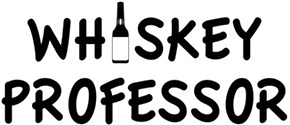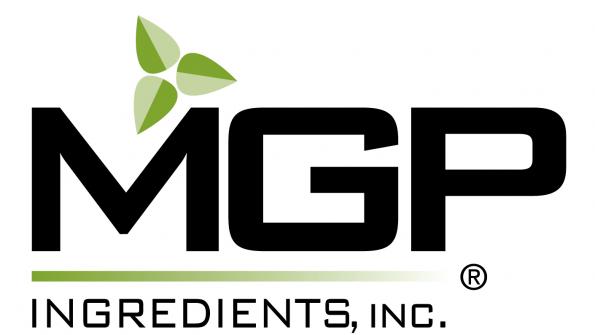Rye Whiskeys Sourced from MGP Ingredients In Lawrenceburg, Indiana
Rye Whiskey has certainly exploded in the last 5 years. It caught distillers by surprise, and those major distilleries producing straight rye whiskeys all ramped up production. But for others that wanted to get in to the rye whiskey world and didn’t want to wait 4 years to distill and age it, there was a handy distillery that already had a good supply of rye whiskey on hand in barrels aging, and was happy to sell to who ever wanted some.
That company was LDI, Lawrenceburg Distillers Indiana (Now MGP Ingredients). But before then it was opened up after Prohibition by Sam Bronfman of Seagrams, because it was a massive facility and since they made blended whiskey and it’s location, they could get their young blended whiskey to market much faster than those distillers making straight and bottled in bond whiskies.
And make blended whiskey they did. Back then they made 7 different recipes. At the plant in Lawrenceburg they produced Seagrams 5 Crown, and Seagrams 7 Crown. 5 Crown was a blend of five different whiskey recipes and 7 Crown, of course seven different whiskey recipes. One of those recipes was a grain neutral spirit. Two thirds of that blended whiskey was that grain spirit. The bottles use to list it at 66% grain spirits and Seagrams 7 now lists it at 75%.
They would use the other recipes as flavoring whiskies and were up to 100% of a grain. If you go to their website now at MGP they list their recipes there at www.mgpingredients.com and then go to the pull down box on the right that says SEARCH INGREDIENTS BY PRODUCT NAME, then the pull down box to ALCOHOL/BEVERAGE and you’ll see 99% corn bourbon, 45% wheat bourbon, 95% wheat whiskey, 100% barley malt, corn whiskey 15% rye, etc. Those were the different recipes produced there that made up the blending recipes of Seagrams 5 and 7 Crown.
One of those recipes has been sourced by many companies jumping in to the rye world. That’s 95% rye and 5% malted barley. Rye whiskey is still a fairly small universe. Probably less than 700,000 cases (at time of publication of this article). To put that in perspective; Evan Williams Black Label Bourbon alone sells over 2 million cases a year, and Jim Beam White Label alone sells 6 million, and Jack Daniels 22 million!
When spirits giant Diageo wanted to enter the rye whiskey world, they did it with Bulleit and Dickel, and they didn’t have to go far. They just had to call the company that produced Seagrams 7 for them that already had this 95% rye recipe already laid down and aging. Because Diageo had Bulleit bourbon and already contract distilling that at a couple different major distilleries, this was a logical and smart line extension. And with the power of their sales force, quickly rose to one of the leaders of the category along with Jim Beam, Old Overholt, Rittenhouse, Sazerac, Wild Turkey.
It was also a sharper and different flavor profile since those other major distilleries use more of a traditional Kentucky recipe for rye with right at 51% rye 10-15% malted barley, and 30-40% corn. The 95% rye recipe remember was just going in to a blend of recipes and had to be sharper to “poke through” the neutral grain spirit and 4-6 other recipes. 95% rye recipe is also lower in yields since it doesn’t have corn and the starches (and sweetness) that provides.
I dare say Sam Bronfman and Seagrams in 1934 never dreamed this recipe of 95% rye would ever be sold and consumed the way that it is today and through so many different labels and companies. It costs millions of dollars to build a distillery and millions each year in barrels so to get in the bourbon world and go up against the “big guys” is a tough nut to crack.
But the Rye Whiskey world was a smaller universe to crack, and here was company willing to sell full barrels of already aged and aging product and all you had to do was come up with a name for it, and then a bottle it went in, and then create a marketing story to sell this blending recipe for Seagrams 7 that made this mass produced blending recipe sound sexy – and you were in business.
With the BOOM of demand for straight bourbon, rye, wheat, malt, corn, and American whiskeys, the demand for cheaper blended whiskeys like Seagrams has declined. The result was a lot of these blending recipes spending more time in barrels and aging longer than anticipated. So a lot of this 95% rye whiskey was around to buy and all you had to do was to get in line.
The same thing happened as blended Canadian Whiskey declined with brands like Windsor Canadian, and that’s how that 100% Canadian Whiskey was aged for 10 years or so, and so when Whistle Pig and Jefferesons wanted to come out with a 100% rye whiskey, BOOM there it was for the buying too. This 100% rye is a blending whiskey for Windsor Blended Canadian. Because these two distilleries mostly make blended whiskeys, they had no need for it, and happy to sell to whoever came along with the money in hand.
So the next time you mix up a Manhattan or Old Fashioned, you can use a STRAIGHT RYE WHISKEY like Rittenhouse or Sazerac, OR you can use a blending recipe for Seagrams 7.
I know which whiskey I’ll be using in mine, how about you?
Here is a list of brands that MGP Ingredients currently sells to. This list was compiled by Holmes Osbourne of Osbourne Global Investments, and as an investor, he was impressed by the attractive stock price and the way the company was/is able to play in the alcohol industry by just being an affordable source.
List of Brands sourced from MGP Ingredients
(source Holmes Osbourne – Osbourne Global Investments)
31 N 50 Bourbon (Dry Diggings)
4 Spirits Bourbon and American Whiskey (4 Spirits)
1888 Bourbon (Diversa Brands)
99 Bottles Bourbon & Rye (PA Private Label Spirits)
Angel’s Envy Rye (Louisville Distilling Co.)
Aztec Spirits Whiskey Distilled from Bourbon Mash (Aztec Spirits)
Backbone Bourbon (Crossroads Vitners/Strong Spirits)
Batchers’ Bourbon (Litchfield Distillery)
Bearded Lady Bourbon (Vok Beverages)
Belle Meade Bourbon (Nelson’s Greenbriar)
Big Ass Bourbon (Diversa)
Big Bottom Bourbon (Big Bottom)
Big House Bourbon (Underdog Spirits)
Big Y Rye (PA Private Label Spirits)
Bone Snapper Rye (Strong Spirits)
Bourbon 30 (Glenns Creek Distilling)
Bower Hill Rye (Meier’s)
Breaker Bourbon (Ascendant Spirits)
Bulleit Rye (Diageo)
Cadée Bourbon & Rye (Cadée Distillery)
Chattanooga Whiskey 1816 Reserve (Chattanooga Whiskey Co.)
Clarion Bourbon and Blended Whiskey (Distilled Spirits Epicenter)
Cleveland Rye Whiskey (Cleveland Whiskey)
Coney Island Carlo Bourbon (Terresentia)
Copper City Straight Bourbon (Arizona Distilling Co.)
Corn Star Corn Whiskey (Bardstown Barrel Selections)
Cougar Bourbon & Rye (Foster’s)
Country Smooth American Whiskey (Speakeasy Spirits)
Defiance Whiskey (Defiant Spirits)
Doubleday Bourbon (Cooperstown Distillery)
Eighteen 33 Bourbon (Boone County Distilling Co.)
Filibuster Bourbon Rye (M.S. Trading LP)
George Dickel Rye (Diageo/George Dickel)
George Remus Bourbon & Rye (Queen City Whiskey/Strong Spirits)
Henderson Rye (North Texas Distillers)
High Liquors Bourbon & Rye (High Liquors)
High West (an element of many of their whiskeys blends)
Homestead Bourbon (Homestead American whiskey)
Hooker’s House (some of their bourbons and their rye; Prohibition Spirits)
Iowa Distilling Company Caribbean Cask Rye
J. Green Bourbon and Rye (Shadow Beverage Group)
James E. Pepper 1776 Bourbon & Rye (James E. Pepper/Strong Spirits)
James Oliver Rye (Indio Spirits)
J.R. Revelry Bourbon (La Bodega Internacional/Speakeasy Spirits)
Joint Bourbon (Temperance Distilling Co.)
Joseph Magnus Bourbon (Jos. A. Magnus & Co.)
Knotter Bourbon & Rye (Blaum Bros.)
Krofters Double Barreled Bourbon (Litchfield Distillery)
LeMont Rye (PA Private Label Spirits)
Lost Republic Bourbon & Rye
Mosswood American Light Whiskey (Mosswood Distillers)
O.K.I. Bourbon and Rye (New Riff Distilling)
Old Hickory Bourbon (Meier’s)
Old Scenter Bourbon and Rye (Strong Spirits for R. Griesedieck Distilling)
Pinhook Bourbon (CJS Beverage Corp.)
Prichard’s Rye (Prichard’s)
Rebel Yell Rye (Luxco)
Rebellion Bourbon (Market Street Spirits – newer batches)
Redemption Bourbon & Rye (Bardstown Barrel Selections)
Riverboat Rye (Bardstown Barrel Selections)
Rough Rider Bourbon & Rye (Long Island Spirits)
Sagamore Spirit Rye (Distilled Spirits Epicenter)
Seagram’s 7 Blended Whiskey (Diageo) The flagship of this distillery
Single Track Rye (Range and River Distilling)
Smokin’ Joe’s Bourbon & Rye (PA Private Label Spirits)
Smooth Ambler Old Scout Bourbon, Rye and Corn Whiskey (Smooth Ambler)
Smuggler’s Notch Rye
Spirit of America Bourbon (Hobson & Roberts)
Spring Mill Bourbon (Heartland Distillers)
Stoutheart Bourbon (Hobson & Roberts)
Taos Lightning (KGB Spirits)
Temperance Trader (Bull Run Distilling)
Templeton Rye (Templeton)
Temptation Bourbon (Bardstown Barrel Selections)
The Saloon Bourbon & Rye (PA Private Label Spirits)
Tin Cup Whiskey (Proximo Spirits)
Troubadour Bourbon (The Original Texas Legend Distillery)
Untitled No. 1 Whiskey (One Eight Distilling)
WH Harrison Bourbon (Tipton Spirits)
Whistlepig Old World Rye
WhiteHeart Bourbon (Hobson & Roberts)
Widow Jane Rye (Cacao Prieto)
Willett Rye (Indiana ryes)
Winghart’s Bourbon & Rye (PA Private Label Spirits)


I’ll be using MGP rye (High West) because it is really, really tasty. Who cares if it was intended to blend, it is still super yummy.
Bernie, I think Michter’s should be added to your MGP-sourced list. I know they only recently installed their stills but have 4 whiskeys on the market.
Thanks…I’ll look in to that!
Michters is mostly contract distilling but I don’t think they use MGP for anything.
Michter’s may have 4 products (not including age stated and limited release bottling), but say they are distilled in Kentucky. The speculation is that it is sourced from Brown Forman.
Bernie, I normally like your opinion so I’ll disagree respectfully here. Who gives a damn? If it’s good tasty drinkable whiskey that people are willing to pay money for, then what’s the problem? If there wasn’t a market for it, people wouldn’t buy it. Also, companies often buy commodity whiskey, only to take it and do a nice finish on it. Jeffersons and Angel’s Envy are two notable and popular brands that are open about doing this very thing. Don’t ever let anyone tell you that you are drinking your whiskey wrong or drinking the wrong whiskey. Happy drinking!!
No worries Brian,
I appreciate your feedback! #StayBonded
Brian – It’s fine to sell a product – delicious or not – but marketing with a made-up story to mis-lead consumers is not okay. It’s amazing how much marketing – labels, color, stories – influences perceptions and taste.
Bernie, I have attended a couple of your tastings at Westport Whiskey. You turned me onto Henry McKenna 10 YO bottled in bond there. I love it. Your presentations are great but your down to earth whiskey information is priceless.